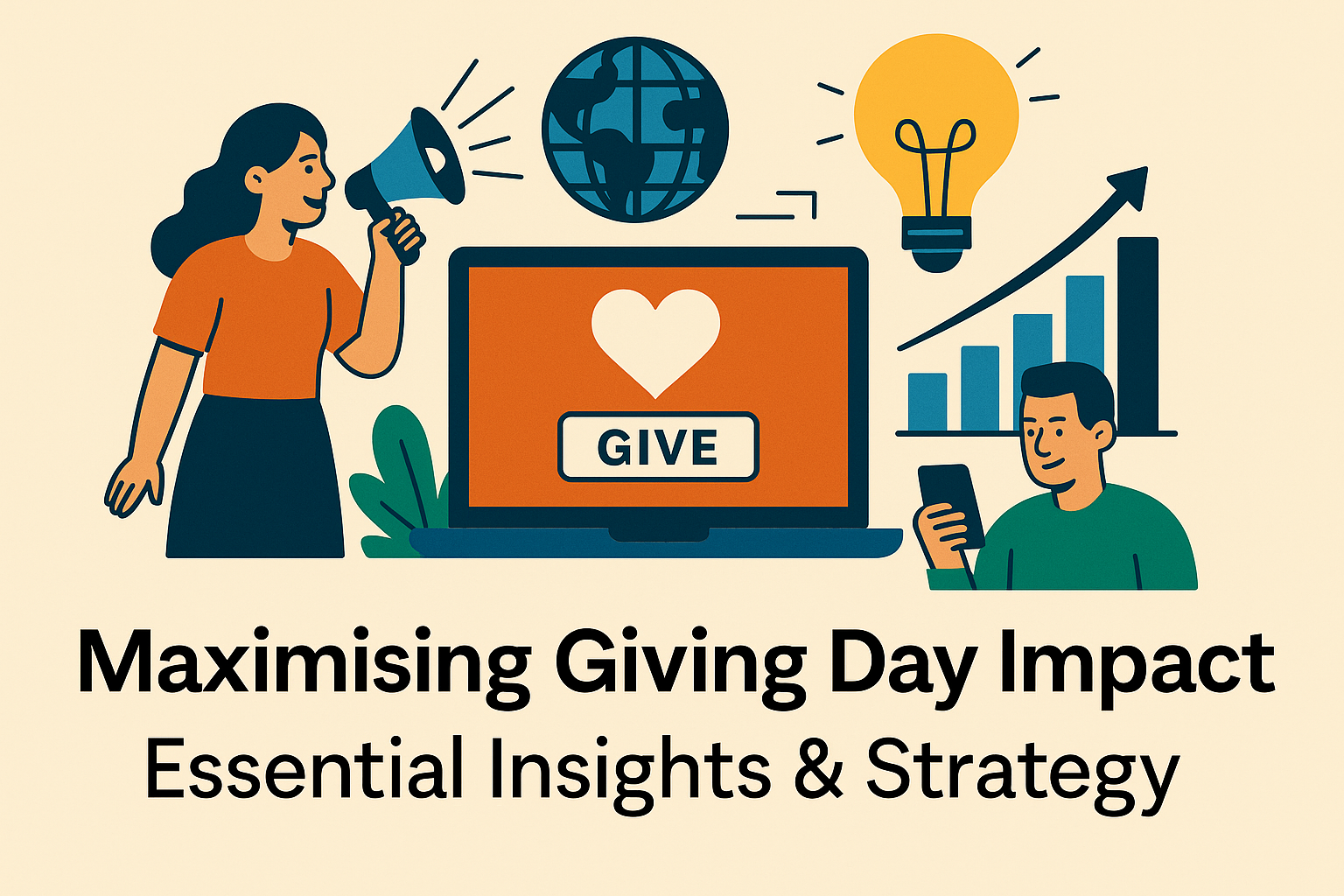

Giving Days
In the second part of our Giving Day Webinar Series - Creating Dynamic Communications Plans That Create Results. Our hosts, Marie-Rose Delauzun and Kat Carter, will be discussing a range of topics, from effective storytelling, tips for creating video content, expanding content distribution through internal resources, as well as many others. The aim of the webinar is to provide viewers with practical tips that they can take back to their own institutions or organisations, leaving them feeling more confident in their own ability to create content that increases donor participation.
One of the most important topics of the webinar will be the discussion around email. Email can make or break your Giving Day. If neglected it can leave potential supporters uninspired and dissuaded from participating. However, if used well, email can be the driving force behind your day’s success.
Ahead of this week’s webinar, we sat down with host, Kat Carter, Head of Marketing at Hubbub, for a quick Q&A to discuss some of her top tips for engaging Giving Day audiences with email.
A: I am! Discussing thoughts and ideas around Giving Days is one of the best parts of my role at Hubbub. I like seeing the little lightbulb moments people have (difficult in a webinar, I know) from the content we share. Hopefully we’ll be able to provide a few key takeaways that leave viewers feeling more informed and confident about their own communications strategies than they were before watching the webinar.
A: Email is so important because it will be the main channel that institutions or organisations use to encourage donor participation on the day itself. Giving Days are primarily digital activities and email provides the loudspeaker for conveying the impact and success the donor can have. But not everyone will be on board from the start. Some will, and we love these kinds of donors, however because your email lists will include lots of cold non-donors, they'll need more encouragement than a singular email with one example of impact can provide. It’s not just email itself that’s important - it’s the volume of email that’s key. Skeptic non-donors need enough social proof that they’ll get to the point at which they say ‘This Giving Day looks like it will be a success and I want to be a part of that success’. Creating a healthy volume of emails can help more donors get there.
A: It varies, depending on how long your day is, what your segmentation is, and what areas of the world you’re hoping to engage with. On average, the number of emails that will be sent on a Giving Day range between five and ten. You want to hit the key times of day when people will be idly scrolling or checking their emails. Times such as before work, lunchtime, after work and in the evening after dinner time. If you have international audiences, than you’ll want to also consider sending emails to those segments at equally relevant times.
A: On the whole, unsubscribe rates for Giving Days are very low, around 1%. And those might be people who may have never been interested in giving, either to the day itself or in general. Giving isn’t for them - that’s fine. More budget for those who do want to give! There are a few tips though for not annoying people with email.
1) Take a look at the overall journey of the day and convey that through the emails themselves. Emails that show progress and shout about success can be really influential - providing the social proof potential supporters need to take action.
2) Have enough content that you can tell a variety of stories that can influence a variety of potential supporters. One person’s story may resonate with one audience, while another’s story may resonate with a totally different audience.
3) Pre-warn your audiences. Tell them that Giving Day will be a day that they’ll be hearing from you more often than usual, but that once the day is finished that you’ll resume communications at a ‘normal’ pace. This way they know the volume of emails is temporary.
A: I don’t want to give too much away before the webinar… but we could share this one bit and leave a few more things for next week. It’s such a good chart!

The blue line is gifts needed per hour to hit the desired goal and the red line is actual gifts received. The green dots are indicators of emails sent, and we can see that every time an email is sent there is a clear increase in the number of gifts received. So many in fact that the day hits its goal before it ends. This level of activity from email is what you want for a Giving Day.
This is also something that we’ve seen multiple times with different Giving Days so we feel confident that it’s a reliable demonstration of what success around email strategies looks like. However, it’s not just the action of sending out the email that creates those spikes, but I guess that’s what we’ll talk more about in the webinar.
You can register and watch the On Demand version of this webinar here

By clicking “Accept”, you agree to the storing of cookies on your device to enhance site navigation, analyze site usage, and assist in our marketing efforts. View our Privacy Policy for more information.




